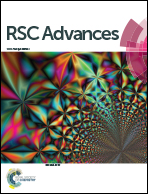Toxicity of layered semiconductor chalcogenides: beware of interferences
Abstract
The absence of bandgap in graphene has opened exploration in a new class of 2D nanomaterials: layered semiconductor chalcogenides. Research has found that they have promising properties which are advantageous for applications in a wide range of fields such as solar energy conversion, field effect transistors, optoelectronic devices, energy storage, and is expanding into biomedical applications. However, little is known about their toxicity effects. In view of the possibility of employing these materials into consumer products, we investigated the cytotoxicity of two common layered semiconductor chalcogenides, namely GaSe and GeS, based on cell viability assessments using water-soluble tetrazolium salt (WST-8) and methyl-thiazolyldiphenyl-tetrazolium bromide (MTT) assays after a 24 h exposure to varying concentrations of the nanomaterials on human lung carcinoma epithelial cells (A549). The cytotoxicity results indicated that GaSe is relatively more toxic than another group of 2D layered chalcogenide: transition metal dichalcogenides (MoS2, WS2, WSe2). On the other hand, GeS appeared to be non-toxic, with the concentration of GeS introduced having a positive correlation with the cell viability. Control experiments in cell-free conditions revealed that both GaSe and GeS interfered with the absorbance data gathered in the two assays, but the interference effect induced by GaSe could be minimized by additional washing steps to remove the nanomaterials prior to the cell viability assessments. In the case of GeS, however, the interference effect between GeS and both assay dyes were still significant despite the washing steps adopted, thereby giving rise to the false cytotoxicity results observed for GeS. Therein, we wish to highlight that control experiments should always be carried out to check for any possible interferences between the test specimen and cell viability markers when conducting cell viability assessments for cytotoxicity studies.


 Please wait while we load your content...
Please wait while we load your content...